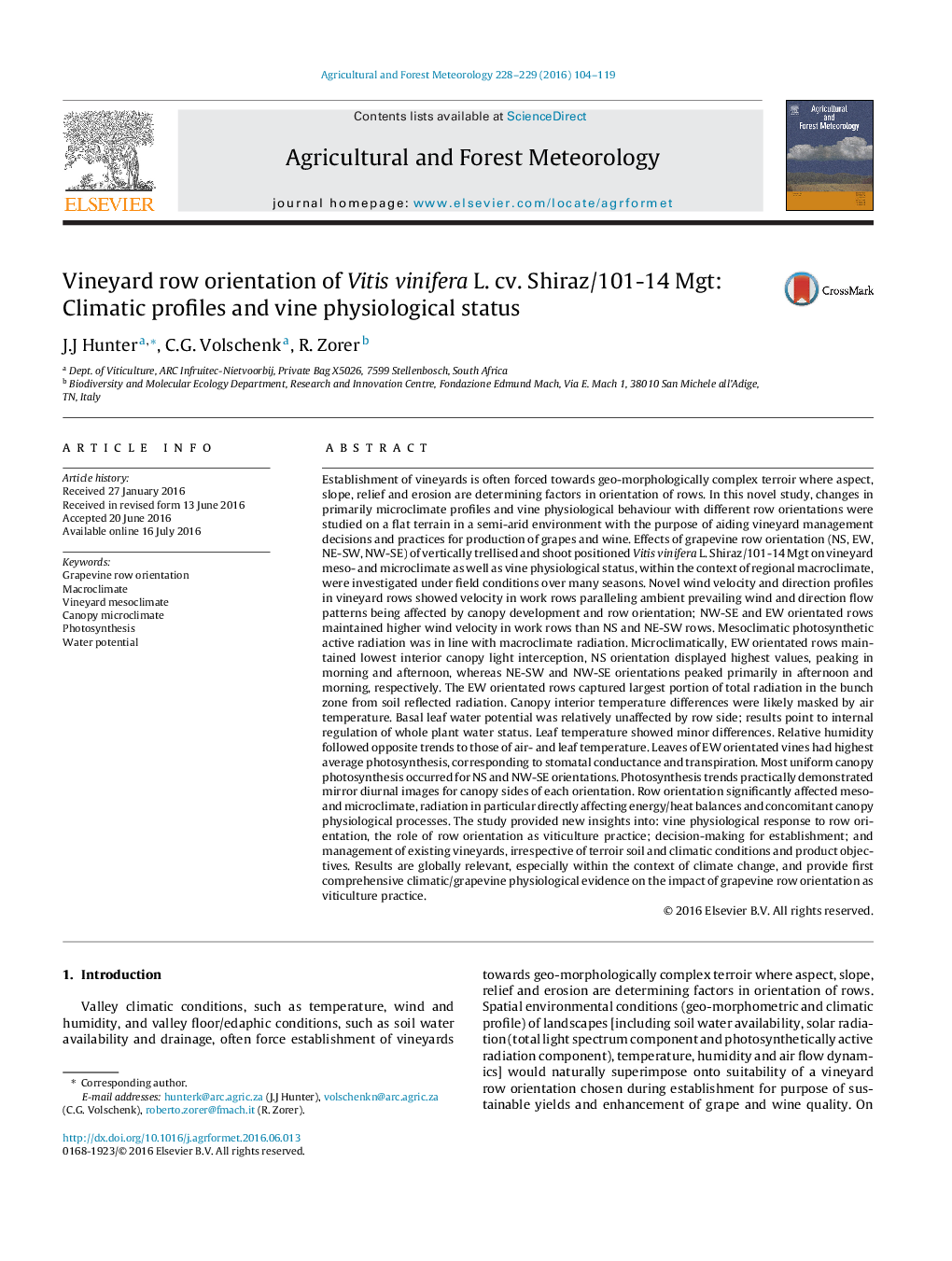| Article ID | Journal | Published Year | Pages | File Type |
|---|---|---|---|---|
| 6458194 | Agricultural and Forest Meteorology | 2016 | 16 Pages |
â¢Novel study of macro-, meso-, microclimate impact on grapevine physiological functioning.â¢Novel grapevine row orientation effects on climate profiles.â¢Novel results on grapevine row orientation as agriculture practice.â¢Globally relevant results.â¢High value within the context of climate change.â¢Results vital for field crop management.
Establishment of vineyards is often forced towards geo-morphologically complex terroir where aspect, slope, relief and erosion are determining factors in orientation of rows. In this novel study, changes in primarily microclimate profiles and vine physiological behaviour with different row orientations were studied on a flat terrain in a semi-arid environment with the purpose of aiding vineyard management decisions and practices for production of grapes and wine. Effects of grapevine row orientation (NS, EW, NE-SW, NW-SE) of vertically trellised and shoot positioned Vitis vinifera L. Shiraz/101-14 Mgt on vineyard meso- and microclimate as well as vine physiological status, within the context of regional macroclimate, were investigated under field conditions over many seasons. Novel wind velocity and direction profiles in vineyard rows showed velocity in work rows paralleling ambient prevailing wind and direction flow patterns being affected by canopy development and row orientation; NW-SE and EW orientated rows maintained higher wind velocity in work rows than NS and NE-SW rows. Mesoclimatic photosynthetic active radiation was in line with macroclimate radiation. Microclimatically, EW orientated rows maintained lowest interior canopy light interception, NS orientation displayed highest values, peaking in morning and afternoon, whereas NE-SW and NW-SE orientations peaked primarily in afternoon and morning, respectively. The EW orientated rows captured largest portion of total radiation in the bunch zone from soil reflected radiation. Canopy interior temperature differences were likely masked by air temperature. Basal leaf water potential was relatively unaffected by row side; results point to internal regulation of whole plant water status. Leaf temperature showed minor differences. Relative humidity followed opposite trends to those of air- and leaf temperature. Leaves of EW orientated vines had highest average photosynthesis, corresponding to stomatal conductance and transpiration. Most uniform canopy photosynthesis occurred for NS and NW-SE orientations. Photosynthesis trends practically demonstrated mirror diurnal images for canopy sides of each orientation. Row orientation significantly affected meso- and microclimate, radiation in particular directly affecting energy/heat balances and concomitant canopy physiological processes. The study provided new insights into: vine physiological response to row orientation, the role of row orientation as viticulture practice; decision-making for establishment; and management of existing vineyards, irrespective of terroir soil and climatic conditions and product objectives. Results are globally relevant, especially within the context of climate change, and provide first comprehensive climatic/grapevine physiological evidence on the impact of grapevine row orientation as viticulture practice.
